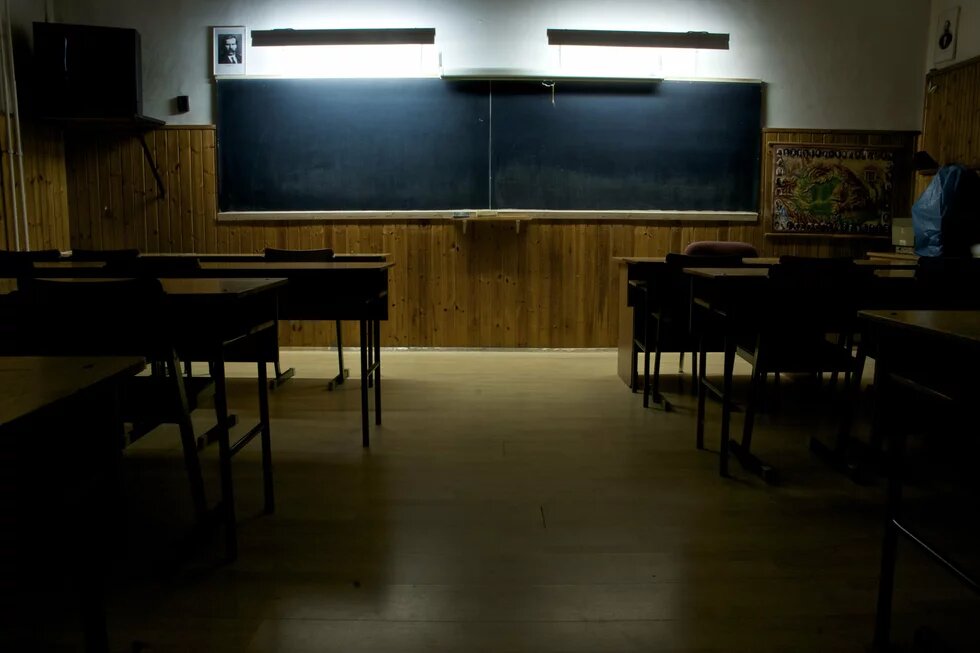
Almost three years have passed since the enactment of changes to the general law in Hungary. The overall message of the Orbán government’s new education system is: you belong where you were born. An analysis.
A complex and extensive analysis of the Hungarian education system is urgently needed now that almost three years have passed since the enactment of changes to the general law. It would be reasonable to base this analysis on studies focusing on the impact of these new elements of the law, but no study has yet been released which analyses the whole structure in depth. The lack of an extensive study can be justified by the short period of time that has passed since the changes were enacted, but due to their significance such a study is imperative. Otherwise, it is difficult to focus on the regulations and to narrow the topic with respect to quality and content.
It is my firm belief that the value of any education system lies in the manner in which it represents equality and justice: the state must support socially disadvantaged children who, due to their family circumstances, are otherwise unable to make the progress required to lead successful adult lives. I will thus analyse the system of regulations with regard to this issue, focusing primarily on the Act on National Public Education and the regulations following from it.
Among its basic principles, the law states that one of its main goals is “to prevent social exclusion using the tools of education” [1] The ambitiousness of this declaration is questionable, however, as the point from which we can talk about social exclusion and the extent to which it is still “tolerated” are not really clarified—should not the overarching vision be to contribute maximally to total equality and to eradicate social exclusion completely as a general principle? But let’s leave this point for now and instead explore—focusing on the details—the extent to which the regulations serve the stated goals. Another of the law’s main objectives is of interest to us, namely that of “providing universal application of the right of access to secondary education until completion of the Matura examinations, or until completion of the first professional qualifications in vocational training”. [2] Do the regulations contained in the law really support this goal?
In this article, I do not address the positive or mostly positive constituents of the system for two reasons: constraints on length and, more importantly, the fact that in my view regulations which consider and support equality should be the minimum requirements when examining any education system.
Integration
The legal definition of disadvantaged and strongly disadvantaged situations would not be problematic if the process of establishing one’s eligibility was not so onerous, raising the possibility that those very families which are in the utmost need of support may be unable to complete all the required formalities. [3] Furthermore, the section of the law defining the borders of districts (in Budapest) and of localities (elsewhere) is also far from perfect, as it does not require an equal ratio of disadvantaged to non-disadvantaged children in schools. [4] If we dig deeper into the ministerial decree on relevant regulations, we encounter another apparent problem: “In particular districts, the ratio of newly admitted disadvantaged to non-disadvantaged students in primary education can be at most 15 percentage points higher than the ratio of disadvantaged to non-disadvantaged students already in education in the whole locality or district.”[5]
This regulation makes it possible for disadvantaged children to be disproportionately represented in certain schools, while at the same time there may be no such students admitted to other schools at all. For example, if the ratio of disadvantaged to non-disadvantaged students in primary education is already high in a certain locality, let’s say 30 percent, and a given school diverges from this ratio by 14 percentage points, the ratio of admissible disadvantaged to non-disadvantaged children will be an extremely high 44 percent in the given school. In reality, this decree would only serve the aim of desegregation if it was impossible for any two schools to have a difference greater than 15 percentage points in the ratio of disadvantaged to non-disadvantaged children admitted. Sadly, the same logic can be found in the decree’s talent management and integration policies: when comparing all institutions in a locality/district, the point of reference is merely the ratio of the whole locality.[6]
The next point of the decree concerns district borders,[7] and actually bolsters the possibility of sustaining segregation by stating that there are certain “districts around certain primary schools where the decree regulating the permissible district proportion of disadvantaged children cannot be upheld”. Furthermore, the decree also states that a school can only be designated as an institution that must admit disadvantaged children in the district if the ratio of disadvantaged to non-disadvantaged children reaches 50 percent in the whole district. It continues by defining how such a segregated school cannot be designated in a district as an institution for disadvantaged children if “the other schools in the locality or district collectively have sufficient capacity to admit all school-aged children within the locality”. But what if there are not enough places? Then we should just accept this as a fact and are allowed to segregate? What kind of desegregation is this?
Another extremely problematic regulation within the Act on National Public Education—which even runs counter to one of its main goals quoted above (namely, to prevent social exclusion)—is the regulation stating that a vocational school has “three grades, all of which contribute to the acquisition of the required theoretical and practical knowledge in the given professional field”.[8] It has been demonstrated statistically that socially disadvantaged children who enter vocational education do so almost exclusively after completing primary school. Thus, primary school is their last opportunity to develop and strengthen the competencies that enable social mobility and lifelong learning. Restricting their training to three years does not serve this aim either, while the definition of “theoretical and practical knowledge in the given professional field” clearly reflects the view that these children are not worthy of learning anything that is not closely related to the profession for which they are studying. Believing that students who complete vocational training (and statistics demonstrate that only a few of them actually do) will proceed to the Matura level is an illusion and complete nonsense.
A dobule-edged sword
In connection with dropping out of the education system, there is a regulation that aims to decrease student absenteeism from school by threatening to suspend the state support to which families are entitled for each school-aged child.[9] This instrument is a double-edged sword, however: although in some cases suspending this aid may result in the student returning to school (disregarding for now the well-established pedagogical principle that intrinsic motivation is preferable to extrinsic motivation), it may just as easily result in the families opting to send their children to work in order to compensate for the reduction in family income, further aggravating the student’s return to the education system.
If we examine the range of support the state provides in schooling, another problem we find is that of food subsidies. Free meals are provided to students receiving regular child protection aid, but only through the eighth grade; thereafter, such children’s families receive only a 50 percent discount.[10] As the risk of dropping out of the school system is greatest at this age, the continued provision of free meals after the eighth grade could also make school more appealing to students (in addition to helping their families financially).
We continue with the regulation on the number of state-funded non-teacher staff at schools, as certain very important functions are missing from the list of positions (e.g. child protection specialists, social workers, social pedagogues).[11] This is a clear message reflecting how important the field of education is to the drafters of this regulation.
Perhaps the most problematic part of the Act on National Public Education is the section on “bridge programmes”,[12] which perpetuate the system’s current inequalities. The Act reads as follows: “Those school-age students who have completed primary education but were not admitted to any secondary school must continue their studies in the Bridge1 programme, on the initiative of their primary school.”[13] Let’s analyse this sentence a bit. If a student completes primary school, i.e. he/she meets the requirements to advance to secondary education, should it not be incumbent upon the state to provide “universal application of the right of access to secondary education”, as stated in the Act?[14] Approaching this question from a different point of view, perhaps the student did not actually meet the requirements but cannot stay in primary school as employees there do not wish to or cannot deal with him/her? Is this a sufficient reason for the school to initiate the student’s admittance into the Bridge1 programme? Furthermore, if the student does meet the requirements, why would he/she not be admitted to any secondary school? Why is there no one to deal with such a student?
Analysing the regulations further, we come to the definition of the bridge programmes: “Public Education Bridge Programmes assist students in proceeding into secondary education, vocational training, or starting to work, and also in gaining the knowledge required for an independent life through pedagogical activities supporting the acquisition and development of comprehensive educational, social and cultural skills, as well as personality-related skills and competences.”[15] The more specific description of the Bridge1 programme reads: “When the student has met the requirements for completion of the programme, the school hands out a certificate.”[16] There are two very serious problems with this regulation. Firstly, a certificate is not equivalent to a school diploma (which means that it is worthless on the labour market), nor does it qualify the holder to continue his/her studies.
This illustrates how the programme actually places students outside the system. Secondly, the sentence contains the “[w]hen the student has met the requirements” wording. I can imagine the authors of this law pondering what will happen if students are not sufficiently cooperative: then they will not meet the requirements! But what are the requirements? Participation in activities that develop their competencies? Again, the responsibility lies with the student who was labelled unsuitable for the school system when no secondary school admitted him/her, and not with the school and the teachers. This is an attempt to write motivation into law—as if it was not the obligation of school employees to motivate students, but rather solely that of the student! Can a child fail in development? (By the way, the ministerial decree mentioned above also clearly states the possibility of repeating a school year.[17] There is a Bridge2 programme as well for students of professional trainings, where repetition of a school year is also made possible.)
The final section of the Act on National Public Education stipulates that only vocational schools can host bridge programmes.[18] The message is thus that disadvantaged students belong in vocational training. Thus, secondary schools should not worry, as statistics clearly show that in almost all cases students who end up in bridge programmes are those who come from highly disadvantaged backgrounds.
The severity of this situation becomes even more acute if we compare all of the above with the recent decrease in the age of required school attendance from 18 to 16.[19] Of course it is not compulsory to leave the school system, but why would someone who does not experience success throughout their studies wish to remain? There are an insufficient number of regulations (with respect to both organisational matters and content) that aim to motivate students and their families to continue education. The sad fact is that almost 100 percent of the students who drop out of the education system are disadvantaged, and most of these are Roma children. Another problem is that it is basically impossible to acquire any qualification by the age of 16 that is higher than a primary school diploma. The chances of success on the labour market with nothing more than a primary school diploma are considerably lower than the chances for those who have completed at least secondary education or professional training.
Here the circle closes. I would just note the drastic reduction in the number of state-funded places in higher education (as existing laws to decrease disadvantage cannot change the core of the problem). There are some further bills pending that make the situation even direr, such as the planned decrease in the number of high school seats and plans to introduce stricter admission requirements to tertiary education.
In the end, the overall message is that you belong where you were born; social mobility is not required, as the nation needs good handymen and public workers, and the national education system serves this aim well. It serves the aim, but it does not serve the nation—especially not its weaker parts. I could compare this system to that of the ancient Spartans, where children deemed too weak were simply tossed off Mount Taygetus—with the only exception being that those children had a chance to be adopted and saved. Do children who drop out of the Hungarian education system have such a chance?
Either way, we may have our own preconceptions about the answer, but real and reliable answers can only be formulated based on concrete facts after sufficient impact studies have been conducted by independent experts. It is of the utmost urgency that these studies be conducted, since it concerns the most important interests of all children, including their right to free and complete access to education. Based on all of the above, it is my firm belief that this right is presently gravely restricted in Hungary.
Translation: Zsofia Deak, proofreading: Evan Mellander.
[1] Act CXC of 2011 on National Public Education, Section 1(1).
[2] Ibid., Section 2(1).
[3] Act XXXI of 1997 on the Protection of Children and the Administration of Guardianship, Section 67/A.
[4] Ibid. 1, Section 50(6).
[5] EMMI Decree 20/2012 (31 August) on the Operation of Educational Institutions and the Official Names of Public Education Institutions, Section 24(2).
[6] Ibid., Section 172(3c).
[7] Ibid., Section 24(3).
[8] Ibid. 1, Section 13(1).
[9] Act LXXXIV of 1998 on Family Support, Section 15(2b).
[10] Act XXXI of 1997 on the Protection of Children and the Administration of Guardianship, Section 151(5b).
[11] Government Decree 326/2013 (30 August) on the Promotion System for Teachers and the Execution of Act XXXIII of 1992 on the Legal Status of Public Servants in Public Education Institutions, fourth amendment.
[12] Ibid. 1, Section 14.
[13] Ibid.,
[14] Ibid., Section 1(1).
[15] Ibid., Section 14(1).
[16] Ibid., Section 14(2).
[17] Ibid. 5, Section 182.
[18] Ibid. 1, Section 14(7).
[19] Ibid., Section 45(3).


